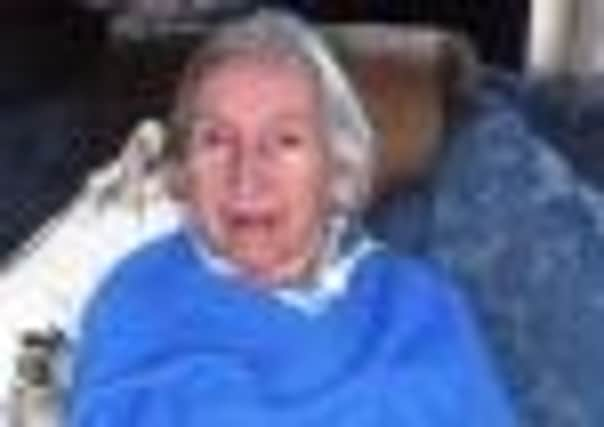Obituary: Marian Elizabeth Davies, gentle and caring bacteriologist who lectured at Royal (Dick) School for Veterinary Studies for more than 20 years


BETTY was the only child of William Arthur and Ruth Davies. Her father died when she was ten and she was brought up by her mother, though in adulthood she cared for her mother until her death in 1981 aged 103.
Betty was educated at St Hilary’s School and later at Edinburgh Ladies’ College (which became Mary Erskine School) and obtained her leaving certificates in the years 1937-9.
Advertisement
Hide AdAdvertisement
Hide AdIn 1939, she embarked on a science degree course at Edinburgh University, but the outbreak of war interfered with academic studies and she was allowed only to complete an ordinary degree of BSc including bacteriology and it was only after the war, in 1946, that she was able to graduate with honours in bacteriology on completing her studies. During the war, however, she increased her knowledge of her chosen subject, and many other related disciplines, by working in the medical diagnostic services run by the Medical School and the Royal Infirmary.
In 1948, she secured a place in the British Postgraduate Medical School in London and was registered as an internal postgraduate student at the University of London to study for a doctorate under the supervision of Lord Stamp, being awarded her PhD in 1953. At the end of 1952 she was appointed scientific officer at the Canine Research Station of the Animal Health Trust at Kennett near Newmarket, Suffolk, under the leadership of SFJ Hodgman MRCVS. Here she worked with several vets and gained experience which kindled her interests in the veterinary field.
In 1957, Betty, with her mother, returned to Edinburgh to take up a post with the Edinburgh and East of Scotland College of Agriculture, but two years later a lectureship in bacteriology at the Royal (Dick) School of Veterinary Studies became vacant. Betty was appointed and stayed until she retired in 1982.
She quickly became involved in all the routine work of a teaching and diagnostic department in a veterinary school. She was involved in teaching bacteriology to large groups of veterinary students and participated in faculty work and for many years was director of studies for third-year students, helping them with both academic and personal matters. She served also on selection boards involved with oversight of student entry to the veterinary course.
During her time at the veterinary school, she pursued a number of lines of research. She worked closely with Professor Frank Alexander, of the Chair of Veterinary Pharmacology, whose interest was the functioning of the digestive process in the horse, and studied the chemistry and bacteriology of the breakdown of plant material ingested by equines.
During this time she was elected as a Licentiate of the Royal Institute of Chemistry and she maintained her connection with the Chemistry Graduates Association of the University.
Betty had other interests outside her work and over the years played a part in many things involved with the community. In 1970, she was ordained as an elder at the Old Parish Church in Portobello and she continued this work in Dunbar where she lived for a few years.
She was a member of the British Red Cross during the war. She joined the Civil Defence Service in London at the Fulham depot, transferring to the Suffolk division when she moved to Kennett and then, on returning to Scotland, she transferred to the Scientific Intelligence Service until the service was disbanded in 1968.
Advertisement
Hide AdAdvertisement
Hide AdShe was interested in conservation matters, being a Fellow of the Royal Society for the Protection of Birds. She was, too, a past president of the Edinburgh Club of the National Federation of Business and professional Womens’ Clubs of Great Britain and Northern Ireland, and was a patron of Mary Erskine School.
Betty had a great love of dogs – she always had a companion dog, if not two. Over the years, many of her dogs have been buried in the pets’ cemetery at Piershill, Edinburgh.
She will be remembered by many veterinary surgeons she taught over more than 30 years as a gentle and caring lady.